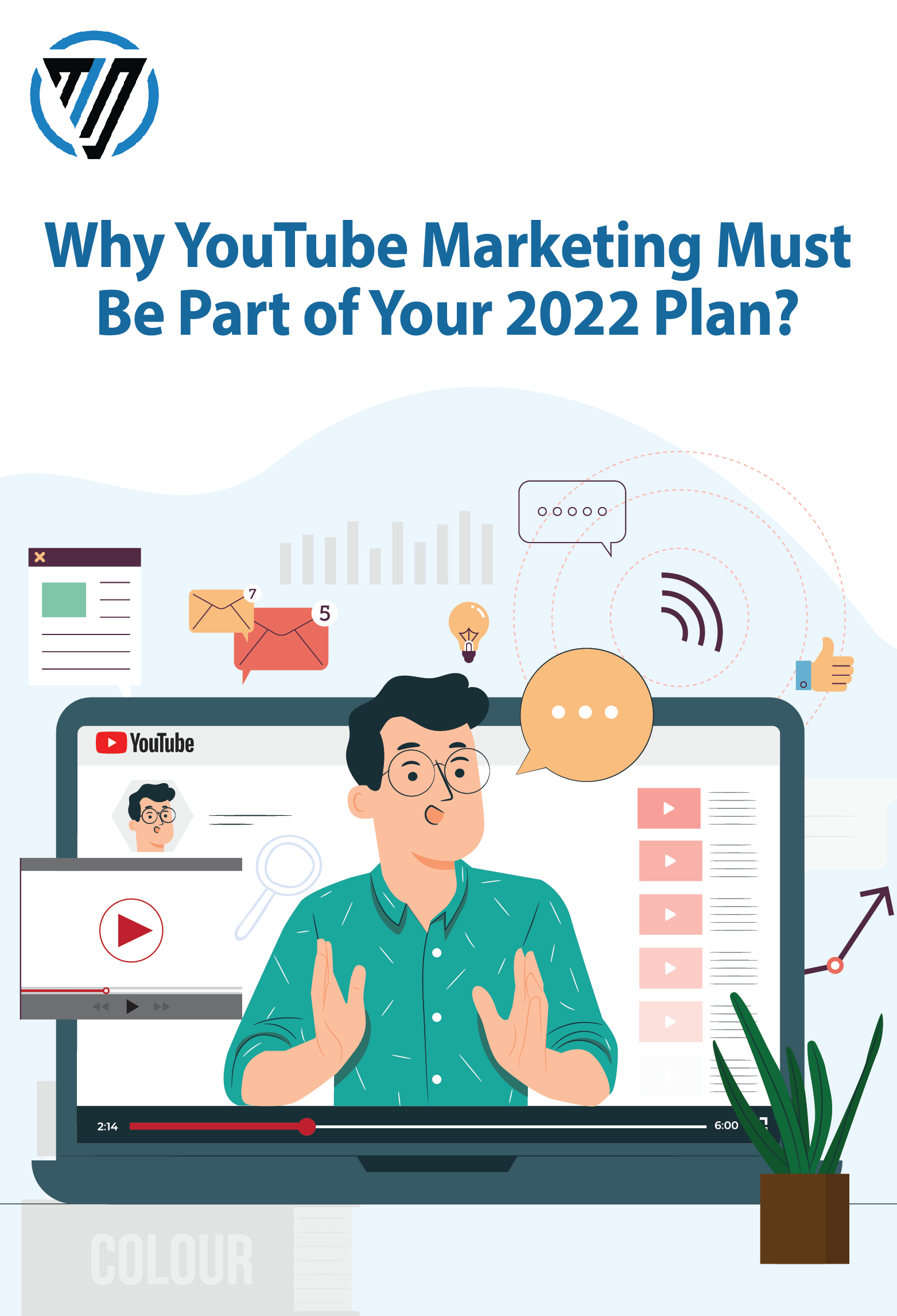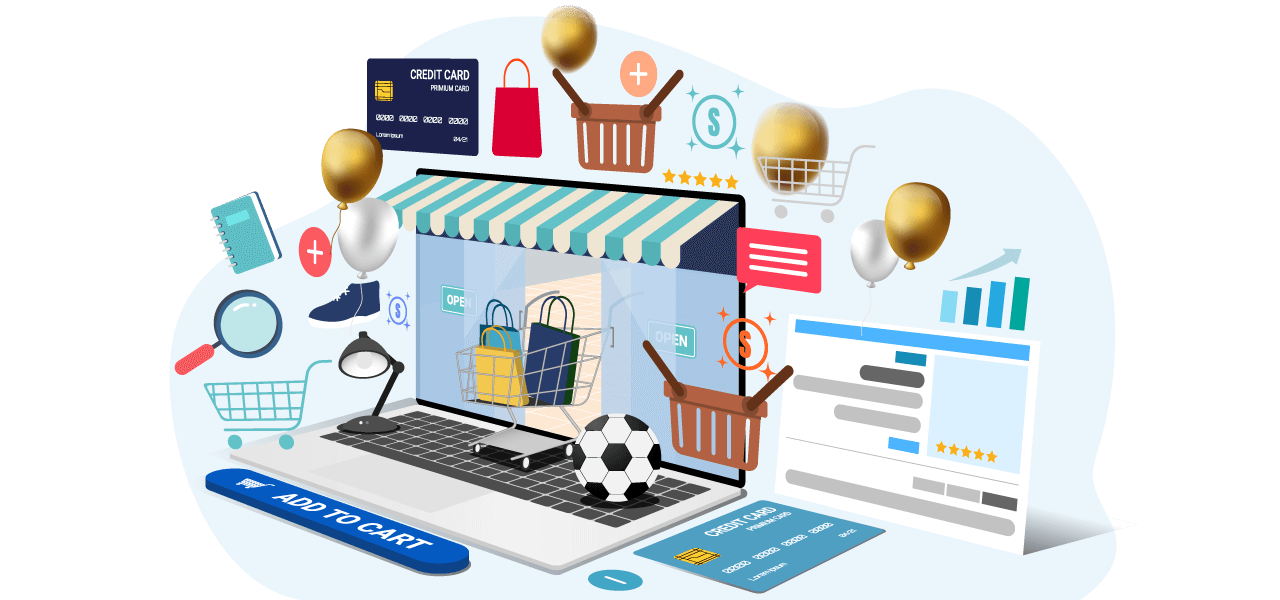
eCommerce has come a long way since its arrival decades back, and no one thought it’ll take over a big part of the conventional trade and retail businesses. It has changed the way we used to shop, redefined business models, and set forward countless success stories. In the present day, ecommerce is booming and expected to grow in multiple folds in years to come. Experts predict by the end of the ongoing year; eCommerce sales will make up 14% of the total purchases in the US.
As we’re witnessing the undeniable impact of eCommerce in multiple business paradigms, no wonder it’s become easier than ever for entrepreneurs and creative thinkers to turn their ideas into reality. It’s become a norm to see new businesses taking off every day and making it big in a short amount of time.
Amid ever-evolving technology and the improved tools, some ecommerce rules and concepts are still the same. To make it big in this highly competitive realm, you need to know about your ecommerce business model and decide on your plan and strategy. With the fundamental knowledge, you’ll be able to hit the profitability wall.
In this blog, we’ll discuss ecommerce business models, innovative examples, and useful concepts. If you’re someone working in ecommerce, or planning to launch their business, stick with us till the end of this blog. Without further ado, let’s get started!
eCommerce Business Models
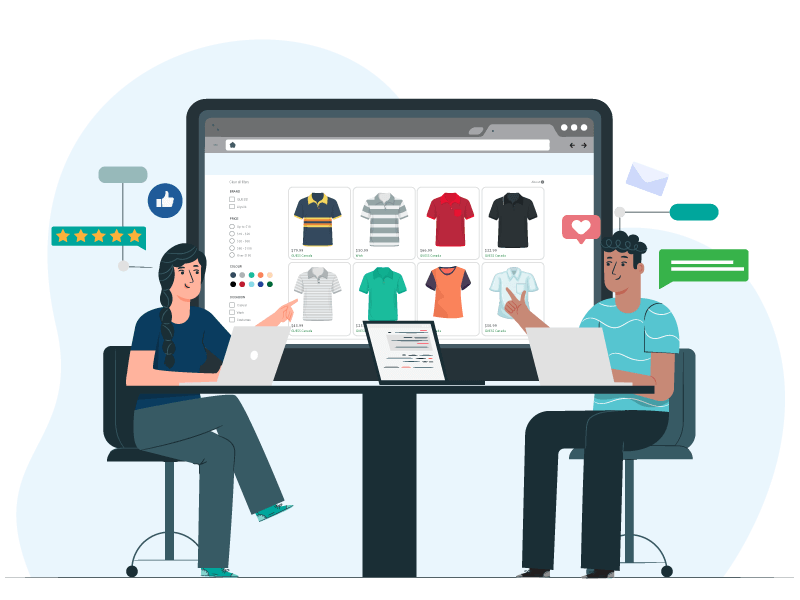
There are four types of traditional eCommerce business models. As a matter of fact, each category has its own unique challenges and benefits. And note that there are no rules to stick to the one category only as there are businesses operating in multiple categories at the same time.
Your eCommerce business is likely to fall in one of the following categories, and having a clear idea will lead you to better solutions and opportunities. So keep reading!
Business To Consumer (B2C)
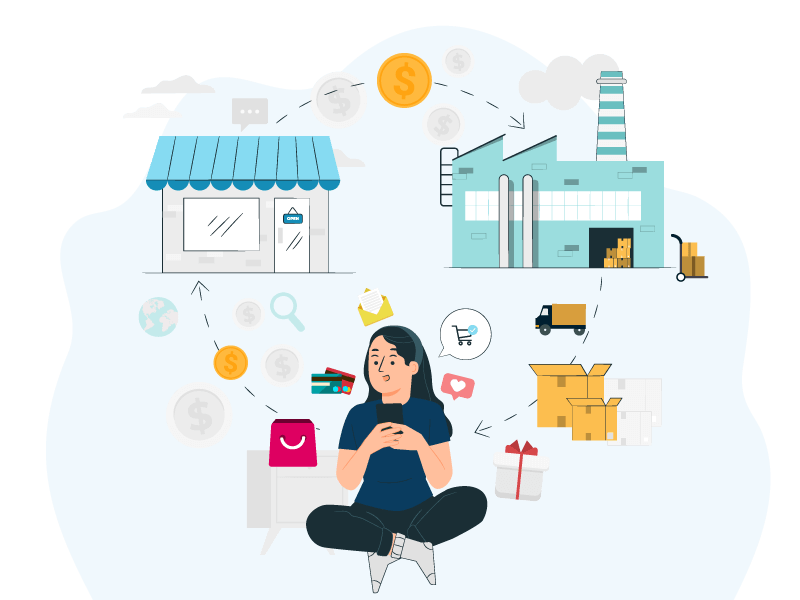
It is the most common traditional ecommerce model in which businesses sell to consumers. This is the concept that comes to the mind of people when it comes to ecommerce and online business. Look around you and you’ll notice B2C models everywhere. Clothes, school supplies, household items, and anything you end up buying online as a consumer, is a part of the B2C model.
With a shorter sales cycle, easy decision-making, and convenient transaction methods, consumers are drawn towards B2C businesses. Not only does it allow to showcase an assortment of products but wide-ranging services too. Speaking of which, we’ve seen many brick and mortar businesses launching their B2C ecommerce models or completely transitioning to it over the years. It has the robust potential to generate exponential revenue and build up your audience with just a little marketing budget, now this scored major points over here!

As it is the deepest market at the moment, there are countless businesses functioning under this model, and many more are joining in every day. Some of the eminent names from the list are, Newegg, Overstock, Wish, Target, Staples, Gap, and more.
Business To Business (B2B)

As the name suggests, the Business to Business (B2B) model allows you to sell products and services directly to another business. In general, the buyer is the end user but in most cases, they resell the products to their own consumers. The industry is packed with businesses of different niches selling their products and services that bring value to other businesses. From IT companies, office supplies, to raw material providers, you’re likely to find diverse businesses under the label of B2B. It is the second most common ecommerce business model, and has a longer sales cycle, greater order value, and guarantees recurring purchases. To start your business, you’ll require more funds and expert personnel for the launch, smoother operations, and keeping things in order all the time.
Alibaba, ExxonMobil Corporation, Chevron Corporation, Archer Daniel Midlands are some of the common B2B ecommerce models that we know.
Consumer to Business (C2B)

This model is unique as it allows you to offer services and sell goods to other businesses. As more businesses are joining in, Consumer to Business has become a lucrative market offering endless opportunities to skilled people everywhere in the world at the moment.
The ecommerce model allows users to showcase their work and services to myriad companies and businesses out there, which in return bid for the opportunity.
Service provision sites like Upwork and Fiverr are the flagbearers of the C2B model. Through their platform, every day plethora of businesses hire freelancers to get a crucial job done in a fixed amount of time. The concept is solely based on empowering consumers by enabling them to price their services and have businesses compete to meet their said requirements. In addition, the functional model has also been lately used to connect companies to influencers to market their brand.
Apart from the service provision sites, all monetization techniques, such as Google AdSense and Affiliate Marketing also fall in the C2B category.
Consumer to Consumer (C2C)
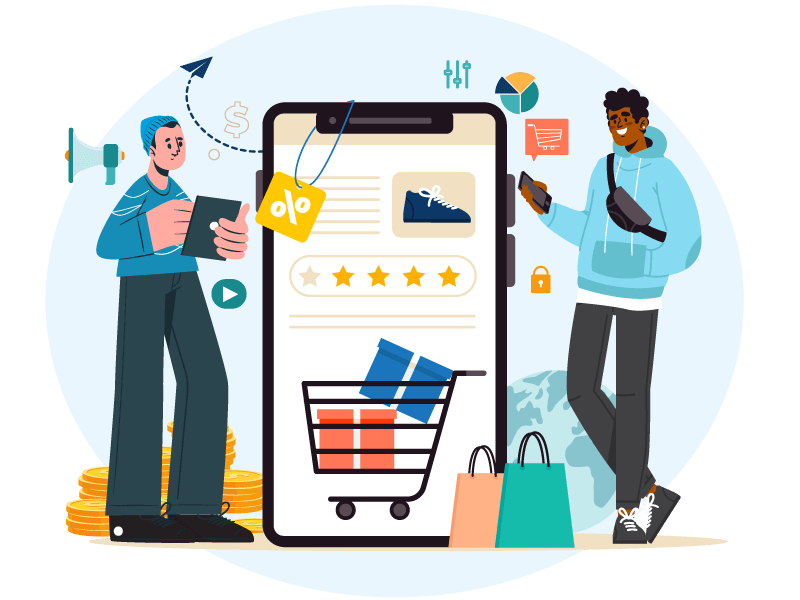
Termed as an online marketplace, consumer to consumer (C2C) model allows consumers to connect with each other for exchanging services and goods. It stemmed from the burgeoning number of online businesses joining eCommerce and a diverse consumer base having different needs. It generates revenue from offering transaction and listing services to the buyers and sellers on the platforms.
eCommerce giants such as Craigslist and eBay are the pioneers of this model and have set the example for others to follow. Despite its demand and growth potential, C2C businesses face a major challenge in tech maintenance and keeping checks on quality control.
So, that was all on the ecommerce business models! The above discussion will help you analyze your business model, decide in which category it belongs, and find innovative ways for successful execution. We wish your ecommerce business grows by leaps and bounds!
We bring you the needed insight and updates to grow your e-commerce business. Stay up to date on all things with eCommerceMD!

